
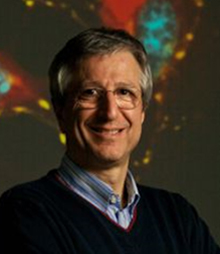
Istituto Italiano di Tecnologia & IRCCS
Ospedale Policlinico San Martino
Genova, Italy
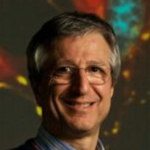
MD, Neurologist. Director of the NSYN Center at the IRCCS Ospedale Policlinico San Martino, full professor of Neurophysiology at the Department of Experimental Medicine, University of Genova and Adjunct Professor, The Rockefeller University, New York, NY. Recognized expert of synaptic transmission at the synapse and circuit levels, genetic models of epilepsy and engineering of new optogenetic probes for synaptic homeostasis. His main contributions in order of affinity with the present call can be summarized as follows: (i) generation of engineered neuronal networks, neuro-electronic and opto-neural interfaces by exploiting optogenetics and photovoltaic interfaces for artificial retina applications; (ii) study of the biocompatibility of graphene and graphene-related materials with neural tissue; (iii) elucidation of the mechanisms of neurotransmitter release, synaptic vesicle trafficking and synaptic plasticity and identification of the proteins involved; (iv) pathogenic mechanisms of synaptopathies in rodent models of human neurological disorders such as epilepsy and autism; (iv) composition of the molecular machine that promotes membrane fusion during exocytosis and identification of the intracellular targets of tetanus/botulinum neurotoxins. He is author of > 230 research papers in peer-reviewed international journals, including: Science (1), Nature (2), Neuron (2), Nature Mater. (1), Nature Comm. (3), Nature Neuroscience (1), J. Cell Biology (5), J. Clin. Invest. (1), EMBO J. (2), ACS Nano (1), Proc. Natl. Acad. Sci. USA (11), J. Neuroscience (11) and of 5 patents. H- index=76 (google scholar), 65 (Scopus); over 20000 citations; total impact factor > 1000.
REPRESENTATIVE PUBLICATIONS
Maya-Vetencourt, J. F. et al. A fully organic retinal prosthesis restores vision in a rat model of degenerative blindness. Nat. Mater. 16 681-689 (2017).
Ghezzi, D. et al. A polymer optoelectronic interface restores light sensitivity in blind rat retinas. Nat. Photonics 7, 400–406 (2013).
Paonessa, F. et al. Regulation of neural gene transcription by optogenetic inhibition of the RE1-Silencing Transcription Factor. Proc. Natl. Acad. Sci USA. 5, 112:E91-E100 (2016).
Bramini, M. et al. Graphene oxide nanosheets disrupt lipid composition, Ca2+ homeostasis, and synaptic transmission in primary cortical neurons. ACS Nano 10: 7154-7171 (2016).
Fruscione, F. et al. PRRT2 controls neuronal excitability by negatively modulating Na+ channel 2/6 activity. Brain 141: 1000-1016 (2018).

Prof. Esteve received the MSc and the PhD degree in Physics from the University of Barcelona (UB) in 1988. He is a Research Professor at CNM in Barcelona, Spain, member of the Micro/Nano-Tools Group. He has supervised 25 Master Theses and 8 Ph. D. Thesis. Prof. Esteve is an avid technologist, whose expertise has produced fruitful systems in the field of micro-nanotechnology, holding 12 patents and several national and international research awards. He has co-authored more than 140 papers, one book and has been coordinator of 17 National Projects and 6 European Projects among which are MAXIMA, MICROMAG, MICROBIOL, NANOMASS I and II, and has been coordinator of the NOMS project, and currently is the IP at IMB-CNM of the H2020 project EnSO (Energy for Smart Objects). He is co-founder of the spin-off Smalle Technologies in July 2012 (www.smalletec.com) for harvesting energy (Prize Foro Emprendedores Repsol 2013).
REPRESENTATIVE PUBLICATIONS
Vargas-Estevez, C., Blanquer, A., Dulal, P., Pérez del Real, R., Duch, M., Ibáñez, E.,Barrios, L., Murillo, G., Torras, N., Nogués, C, Stadler, B.J.H., Plaza, J.A., Esteve, J. Study of Galfenol direct cytotoxicity and remote microactuation in cells. Biomaterials, Volume 139 September 2017, Pages 67-74.
Murillo, G., Blanquer, A., Vargas-Estevez, C., Barrios, L., Ibáñez, E., Nogués, C., Esteve, J. Electromechanical Nanogenerator-Cell Interaction Modulates Cell Activity. Advanced Materials 2017, Volume 29, June 2017, Article number 1605048.
R. Gómez- Martínez, A.M. Hernández-Pinto, M. Duch, P. Vázquez, K. Zinoviev, E.J. de la Rosa, J. Esteve, T. Suárez, and J.A. Plaza. Silicon chips detect intracellular pressure changes in living cells. Nature Nanotechnology., vol. 8, no. 7, pp. 517– 21, Jul. 2013.
C. Vargas-Estevez, M. Duch, M. Duque, F. J. del Campo, L. Enriquez- Barreto, G. Murillo, N. Torras, J.A. Plaza, C.A. Saura, J. Esteve. Suspended Silicon Micro-photodiodes for Electrochemical and Biological Applications. Small, 2017, DOI: http://doi.wiley.com/10.1002/smll.2011920
Vargas-Estevez, C., Blanquer, A., Murillo, G., Duque, M., Barrios, L., Nogués, C., Ibañez, E., Esteve, J. Electrical stimulation of cells through photovoltaic microcell arrays. Nano Energy 51, September 2018, Pages 571-578.
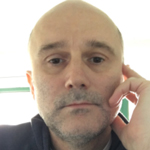
Szilveszter Gáspár is a Senior Researcher at the International Centre of Biodynamics since 2006. He joined this interdisciplinary research institute after obtaining his PhD degree from the Department of Biotechnology of Lund University, Sweden (in 2004) and after working as a researcher at the Department of Analytical Chemistry of the same university (from 2004 until 2006). While working in Sweden, he also carried out several months long research stays at Ruhr-University Bochum, Germany and Institute of Materials Science, University of Tsukuba, Japan. His current research is covering two different but converging fields: 1.) development of electrochemical microsensors for the investigation of biochemical and biological systems and 2.) development of enzyme-modified nanorods for motion-based sensing. He is currently member of the editorial advisory board of Biosensors and Bioelectronics, and acts as reviewer for several scientific journals (e.g., Lab-on-a-chip, Journal of the American Chemistry Society, ACS Applied Materials and Interfaces, Advanced Functional Materials, Chemical Communications, etc.).
REPRESENTATIVE PUBLICATIONS
Pavel, I.-A.; Bunea, A.-I.; David, S.; Gáspár, S. Nanorods with Biocatalytically Induced Self-Electrophoresis. ChemCatChem 2014, 6 (3), 866–872.
Bunea, A.-I.; Pavel, I.-A.; David, S.; Gáspár, S. Sensing Based on the Motion of Enzyme-Modified Nanorods. Biosensors and Bioelectronics 2015, 67, 42–48.
Vasilescu, A.; Gáspár, S.; Gheorghiu, M.; David, S.; Dinca, V.; Peteu, S.; Wang, Q.; Li, M.; Boukherroub, R.; Szunerits, S. Surface Plasmon Resonance Based Sensing of Lysozyme in Serum on Micrococcus Lysodeikticus-Modified Graphene Oxide Surfaces. Biosens. Bioelectron. 2017, 89, 525–531.
Munteanu, R.-E.; Stǎnicǎ, L.; Gheorghiu, M.; Gáspár, S. Measurement of the Extracellular pH of Adherently Growing Mammalian Cells with High Spatial Resolution Using a Voltammetric pH Microsensor. Analytical Chemistry 2018, 90 (11), 6899–6905.
Munteanu, R.-E.; Stanica, L.; Gheorghiu, M.; Gáspár, S. Water Electrolysis Carried out on Microelectrodes as Way to Obtain New Insights into the Regulation of Cytosolic pH. ChemElectroChem, just accepted, https://doi.org/10.1002/celc.201801558.
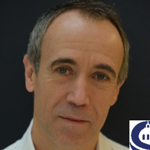
Dr Serge Picaud, PhD is Research Director (INSERM, orcid.org/0000-0002-0548- 5145). He is the head of the Department of Visual Information processing at the Vision Institute. His team is investigating visual function in normal and pathological conditions to understand our vision, develop models of retinal pathology and propose new therapeutic treatments. In the last 10 years, the team has been involved in developing strategies for restoring vision from retinal implants to optogenetic therapies. These strategies are first examined on in vitro models such as retinal explants from rodent, primate or even post-mortem human retina and then validated on living rodents or non-human primates. These validations involve functional in vitro measurements from patch-clamp, multielectrode array (MEA) recording or calcium imaging and in vivo measurement like MEA recording as well as ultrafast ultrasound imaging providing greater resolution than MRI. The team has also access to phenotyping platforms on both rodents and non-human primates including the following technologies (eye fundus examination, Scanning laser ophthalmoscope (SLO), Optical coherence tomography (OCT), electroretinogram and visual evoked potential recording). Finally, restoration of vision is demonstrated by behavioural evaluations such as saccades in non-human primates. These preclinical studies have enabled the team to contribute to several products entering into clinical trials like retinal prostheses with Pixium Vision (NCT03333954) and optogenetic therapy with Gensight biologics (NCT03326336).
REPRESENTATIVE PUBLICATIONS
Trouillet A, Dubus E, Dégardin J, Estivalet A, Ivkovic I, Godefroy D, García-Ayuso D, Simonutti M, Sahly I, Sahel JA, El-Amraoui A, Petit C, Picaud S. Cone degeneration is triggered by the absence of USH1 proteins but prevented by antioxidant treatments. Sci Rep. (2018) 8:1968. doi: 10.1038/s41598-018-20171-0.
Chaffiol, A., Caplette, R. Jaillard, C., Brazhnikova, E., Desrosiers, M., Dubus, E., Duhamel, L., Macé, E., Marre, O., Benoit, P., Hantraye, P., Bemelmans, A. P., Bamberg, E., Duebel, J., Sahel, J. A., Picaud, S., Dalkara, D., A new promoter allows optogenetic vision restoration with enhanced sensitivity in macaque retina. Molecular Therapy (2017) 25: 2546-2560.
Gesnik M, Blaize K, Deffieux T, Gennisson JL, Sahel JA, Fink M, Picaud S, Tanter M. 3D functional ultrasound imaging of the cerebral visual system in rodents. Neuroimage. 2017, 149:267-274.
Bendali, A., Rousseau, L., Lissorgues, G., Scorsone, E., Djilas, M., Dégardin, J., Dubus, E., Fouquet, S., Benosman, R., Bergonzo, P., Sahel, J. A, Picaud, S. Synthetic 3D diamond-based electrodes for flexible retinal neuroprostheses: model, production and in vivo biocompatibility. Biomaterials (2015) 67: 73-83.
Busskamp V, Duebel J, Balya D, Fradot M, Viney TJ, Siegert S, Groner AC, Cabuy E, Forster V, Seeliger M, Biel M, Humphries P, Paques M, Mohand-Said S, Trono D, Deisseroth K, Sahel JA, Picaud S, Roska B. Genetic Reactivation of Cone Photoreceptors Restores Visual Responses in Retinitis pigmentosa. Science (2010) 329: 413-7.
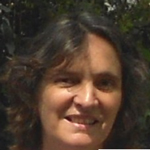
Anne Antoine-Labouret graduated in ESPCI- Paris tech (Ecole Supérieure de Physique et Chimie de Paris) in 1984 and obtained her PhD in Ecole Polytechnique (France) in 1987 on spectroscopic ellipsometry applied to amorphous silicon growth studies. Then she joined SOLEMS team as a development engineer, making thin film optimization (ITO, ZnO) and multilayer optical modelling. Then she turned to encapsulation and accelerated climatic tests issues for a few years. In 1993 she became Sales Manager while the company was becoming independent and also manager of some R&D programs in the field of thin films, and specific solar cells. In January 2018 she became CEO of SOLEMS.
Despite the tremendous changes in the photovoltaic industry, SOLEMS is more than ever offering original amorphous cells, modules and light sensors and advising developers to integrate PV in their products. As sales manager (1993- 2015) Anne created new products, adapted them to the customers specs, explored new markets, promoted and sold specific PV products, generating 0.6- 1M€/year.
In parallel, Anne wrote two popularization books on photovoltaics with DUNOD publisher - 5 editions - translated in english, spanish and portuguese. She gave courses during 5 years in several university degrees in Versailles St Quentin University, Paris XIII and Cergy-Pontoise University.
1) SOLEMS has more than 30 years’ experience and expertise in the field of thin film photoactive devices: www.solems.com
2) OLEMS is part of the consortium of EnSO project (Energy for Smart Objects) of the ECSEL european program: www.enso-ecsel.eu
3) SOLEMS was involved in many research national programs (thanks to ANR) and European programs (ATOS, SOLHYPIN, NANOEFFECTS, INNOSHADE, APOCALYPSO etc ...)
4) SOLEMS generates each year between 0.5 and 1M€ of turnover in the small power Photovoltaic and light sensors business, in France and in Europe.
REPRESENTATIVE PUBLICATIONS
Mutaz Al-Ghzaiwata, Antonino Fotia, André Nuessleina, Lukáš Halagačkaa, Jacques Meotb, Anne Labouretb, Razvigor Ossikovskia, Pere Roca i Cabarrocasa, and Martin Foldynaa. Towards efficient radial junction silicon nanowire-based solar mini-modules. Physica Status Solidi RRL 2018, 1800402.
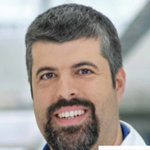
Nanoimmunotech (NIT) is a SME labeled as Innovative SME from the Spanish Ministry of Science, Innovation and Universities. NIT is the first European company dedicated to the multiple biofunctionalization and full characterization of nanomaterials for application in biomedical, pharmaceutical and biotechnology sectors. The company accounts with highly qualified professional human resources and a renowned scientific advisory board with wide experience in biotechnology, health and nanotechnology and has been recognized with several awards, such as the Technologically Innovative Company (EIBT) award. NIT has a vast experience in the design, synthesis and functionalization of nanometric materials for applications in molecular diagnostics, drug delivery and the study of biomolecular interactions, including the functionalization of nano- and microstructured materials with peptides involved in cellular internalization or adhesion, antibodies, enzymes, dyes, drugs, among others. The NIT team combines over 20 years of experience in synthesis, functionalization and characterization of nanomaterials. The biological characterization asses the toxicity of nanomaterials and potential risk to health. We are constantly up to date in terms of nanotoxicity, being members of the National Platform of Nanomedicine – Nanomed Spain, European Platform - ETP Nanomedicine and NanoSafety cluster. NIT has the know-how to perform a proper advice and validation of different nanosystems for biotechnological and biomedical applications.
REPRESENTATIVE PUBLICATIONS
Abad, J.M., Tesio, A.Y., Martínez-Periñán, E. et al. Imaging resolution of biocatalytic activity using nanoscale scanning electrochemical microscopy, Nano Res. (2018) 11: 4232.
Abad, J.M., Bravo I, Pariente F, Lorenzo E. Multi-tasking Schiff base ligand: a new concept of AuNPs synthesis, Anal Bioanal Chem. 2016 Mar;408(9):2329-38.
Mejias SH, Couleaud P, Casado S, Granados D, Garcia MA, Abad J.M., Cortajarena AL, Assembly of designed protein scaffolds into monolayers for nanoparticle patterning. Colloids Surf B Biointerfaces. 2016 May 1; 141:93-101.
García Marín A, Hernández M.J., Ruiz E, Abad J.M., Lorenzo E, Piqueras J, Pau J.L, Immunosensing platform based on gallium nanoparticle arrays on silicon substrates, Biosens Bioelectron. 2015 Dec 15;74 :1069-75.